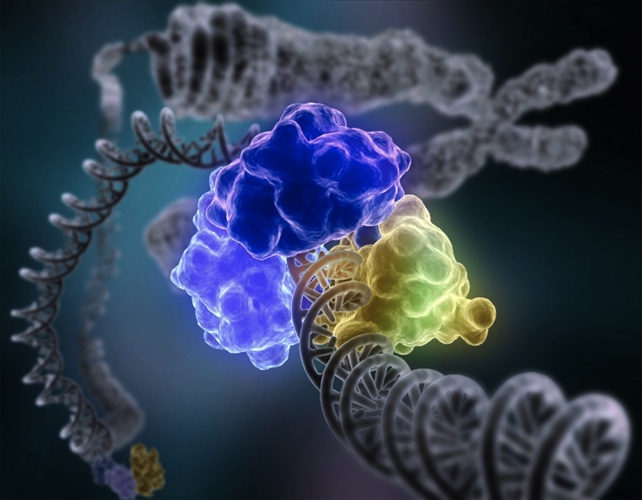Before the twentieth century, biology and physics rarely crossed paths. Biological systems were often seen as too complex to be penetrable with mathematical methods. After all, how could a set of differential equations or physical principles shed light on something as complex as a living being? In the early twentieth century, with the advent of more powerful microscopes and techniques, researchers began to delve more deeply into possible physical and mathematical descriptions of microscopic biological systems. Some famous examples (among many) include Turing patterns and morphogenesis, and Schrödinger's lecture series and book `What is Life?', in which he predicted several of the functional features of DNA. The pace of progress in this field is now rapid, and many branches of physics and mathematics have found applications in biology; from the statistical methods used in bioinformatics, to the mechanical and factory-like properties observed at the microscale within cells.
This progress leads naturally to the question: can quantum mechanics play a role in biology? In many ways it is clear that it already does. Every chemical process relies on quantum mechanics. However, in many ways quantum mechanics is still a concept alien to biology, especially on a scale that can have a physiological impact. Recent technological progress in physics in harnessing quantum mechanics for information processing and encryption puts the question in a different light: are there any biological systems that use quantum mechanics to perform a task that either cannot be done classically, or can do that task more efficiently than even the best classical equivalent? In other words, do some organisms take advantage of quantum mechanics to gain an advantage over their competitors? Many attempts to find examples of such phenomenon have been met with fierce criticism by both physicists and biologists. However, over the past decade a range of experiments have suggested that there may be some cases in which quantum mechanics is harnessed for a biological advantage. In what form do these quantum effects usually appear? In quantum information, arguably the most important quantum effect is that quantum bits can exist in superpositions whereas classical bits cannot. In quantum biology, the role of quantum effects can be subtle and will be described for each system we discuss in this review. However, we may consider a biological system that exploits coherent superpositions of states for some practical purpose to be the clearest example of functional quantum biology.
People involved:
Simone De Liberato
Pavlos Lagoudakis
Hendrik Ulbricht
Marcel Utz
